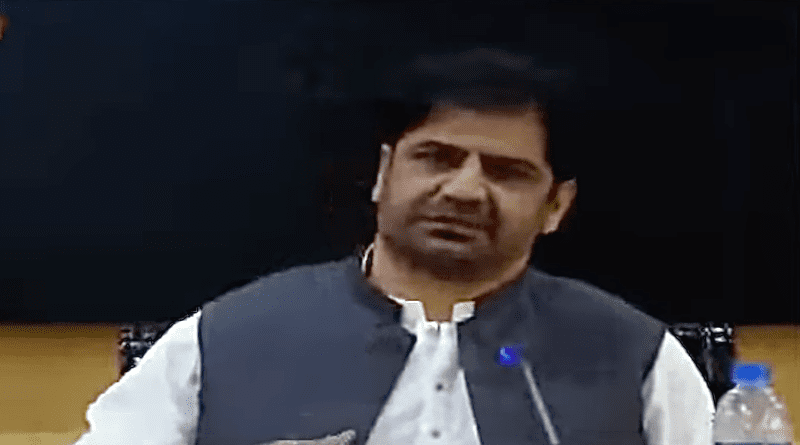Cracks In The Ranks: Infighting Among Baloch Separatists After Gulzar Imam’s Capture – OpEd
The arrest of Gulzar Imam Shambay (GIS), the former chief of the Baloch National Army (BNA), has had a profound impact on the separatist groups operating in Balochistan, leading to infighting and divisions within their ranks. One notable consequence of this development was the death of Nawaz Ali Rind, a commander affiliated with the outlawed Baloch Liberation Front (BLF).
The capture of Shambay, has resulted in significant positive outcomes and has led to the acquisition of valuable intelligence. One of the notable outcomes was the death of Nawaz Ali Rind, a commander of the outlawed Baloch Liberation Front (BLF), due to infighting within the group. Terrorist Nawaz Ali Rind belonged to Awaran and was a leading member of the banned BLF since 2014. This development occurred as a result of the recent arrest of Gulzar Imam Shambay, which created divisions among militant groups and caused setbacks for the alliance of separatist organizations known as BRAS (Baloch Raji Aajoi Sangar).
The arrest of Shambay, who played a pivotal role in uniting various militant groups under the umbrella organization BRAS created a power vacuum and triggered internal conflicts within the separatist groups. With the removal of their leader, differences and rivalries emerged among the militants, as they vied for control and influence within the organizations. These internal divisions and infighting can be attributed to the loss of Gulzar Imam Shambay, who held a significant position as the operational chief and financial manager of BRAS. His capture disrupted the command and control structure of the separatist groups, leaving a void that led to power struggles and clashes among the militants.
The arrest of Gulzar Imam Shambay and the successes of intelligence agencies have put immense pressure on the outlawed organizations, leading to internal conflicts within their ranks. As a consequence, these terrorist groups have resorted to killing their own commanders as a means of self-preservation, after realizing that their operations were being compromised by the tightening noose of law enforcement agencies.
The acquisition of intelligence from Gulzar Imam Shambay has had a far-reaching impact. The information obtained from him helped unravel the structure and networks of the Baloch Liberation Army (BLA) and other terrorist outfits. It shed light on their facilitation routes into Pakistan, their methods of avoiding surveillance, the existence of interlocking cells of terrorists, and the logistics networks that support their activities. Additionally, the intelligence exposed the links between these organizations and external agencies, as well as reveal information about their abettors within the state.
These positive outcomes have dealt a severe blow to the separatist groups and have significantly weakened their command and control structures. The capture of Gulzar Imam Shambay has disrupted their leadership and financing mechanisms, creating panic and paralysis within their ranks. With the dismantling of key nodes within these organizations, their ability to carry out coordinated attacks and sustain their insurgency has been significantly compromised.
The infighting within the separatist groups can be seen as a manifestation of the setbacks they faced following the arrest of their leader. With their operational capabilities compromised and their networks exposed, the groups were thrown into disarray, exacerbating existing tensions and rivalries. The loss of Gulzar Imam Shambay weakened the coordination and cohesion among the militant factions, causing them to turn against each other in a desperate attempt to safeguard their interests and survival.
The infighting and divisions within the separatist groups are indicative of the significant impact the capture of Gulzar Imam Shambay had on their operations. It demonstrates the vulnerability and fragility of these organizations when their leadership is compromised. The removal of a key figure like Gulzar Imam Shambay disrupted their ability to carry out coordinated attacks and undermined their collective strength.Furthermore, the infighting among the militants highlights the underlying complexities and challenges faced by these separatist groups. Their struggle for independence and their fight against the Pakistani government are fraught with internal conflicts, which further weaken their overall effectiveness and diminish their ability to achieve their objectives.
Hence, the capture of Gulzar Imam Shambay, the leader of the Baloch National Army (BNA), resulted in divisions and infighting within the separatist groups in Balochistan. The loss of their leader created a power vacuum and exposed the vulnerabilities of the militant factions, leading to internal conflicts and rivalries. This internal strife underscores the impact of Gulzar Imam Shambay’s arrest and highlights the challenges faced by these separatist groups in maintaining their unity and coherence.

